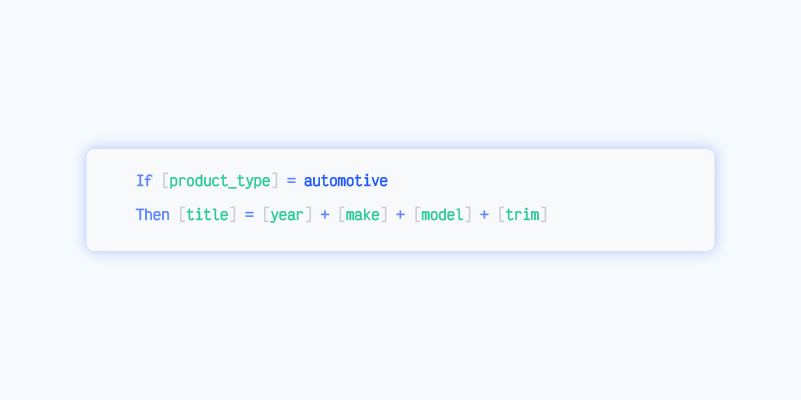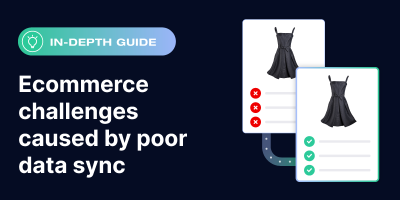If you’re hosting a marketplace, job board, classifieds website, or any other platform where vendors list products or services, then you know efficient data management is crucial to your operational success.
However, ingesting, standardizing, enriching, and ultimately listing seller data is difficult at scale.
These processes are time-consuming, and seller onboarding isn’t a one-and-done activity; keeping listings up-to-date requires daily imports and maintenance by your internal teams.
You could avoid some of these issues by requiring vendors to match your data requirements, but putting the burden on sellers can dissuade them from joining your platform and decrease the product selection available to consumers.
On the other hand, asking your internal teams to manage these data processes takes away valuable time and resources from improving your platform and pursuing other important business initiatives.
In this blog, we explore common onboarding challenges and explain how they can be resolved with flexible, time-saving data standardization tools.
Ingesting data from diverse sources
Before you can standardize and improve your seller data, you need to ingest it into your system.
Importing large files in different formats and from multiple sources is tricky, especially for platforms that sell products across a variety of verticals.
For example, a classifieds website that enables sellers to list automotive, real estate, and regular ecommerce products—such as furniture or clothing—has to ingest three different types of data. Tending to data downloads and manually reformatting each feed takes time and development resources.
Some sellers require listing updates multiple times per day. If these data pulls are done manually, frequent data imports can quickly become a chore and may even cause delays.
While feed management platforms are commonly used for scalable optimization and channel expansion, they can also be used by systems or channels to onboard sellers. With the right data feed management platform, you can ingest seller data from one or many sources, and then consolidate that information into a single feed. This can be done using custom API connections or web crawls.
Data imports and the subsequent updates can be automated and establish a solid foundation for the remainder of the onboarding process.
Formatting and standardizing data
After data is ingested into your system, it needs to be standardized so the listings on your site are consistent. Every platform has its own standards for displaying data, and yours likely differ from the raw feed files you receive from sellers.
Manually editing this data for a couple of hundred SKUs is doable, but when you’re dealing with hundreds of merchants, each with hundreds or thousands of SKUs, scalability suffers without automation and consolidation.
Using the wrong systems for data standardization can result in a disjointed user experience, undermining your platform’s usability and reputation.
Feed management platforms like Feedonomics come equipped with data standardization tools that allow you to streamline multiple processes.
The same rulebook that your in-house team uses to format listings can be used as a set of custom rules in a feed management platform.
For example, if your formatting standards for automotive listings require that the title starts with the year, followed by the make, model, and trim, then you could create a transformation rule that looks like this:

The platform then parses the values from each bracketed attribute and generates uniform automotive titles across the catalog:

Likewise, you can apply a whole separate set of rules for your retail, real estate, jobs, and service listings so they each meet your distinct formatting requirements.
How Feedonomics standardized millions of SKUs for Canada’s largest classifieds site
Enriching the data for better performance
Even when data is correctly formatted, listings may require further refinement to ensure they are engaging, informative, and optimized for search.
Without this optimization, platforms risk subpar listings that fail to capture the interest of their users or don’t present the information needed to make informed purchasing decisions, potentially leading to higher product return rates and customer dissatisfaction.
Data feed management platforms can enhance the quality of listings with predefined optimization rules. This process includes improving titles, descriptions, and images, as well as ensuring key information is highlighted, ultimately driving better performance and user experience.
For example, if you have retailers selling clothing on your platform, you can set rules within your platform to parse through their product attributes and generate bullet-pointed descriptions that look like this:

If you’re not sure what kind of optimizations are needed, full-service platforms like Feedonomics have channel experts who can walk you through data standardization best practices for high-performing marketplaces.
Syndication to other channels
While preparing seller data for your platform is difficult enough, it becomes even more complex if you want to boost business by advertising your listings on other sites.
This allows you to drive more traffic to your platform while also giving merchants a way to sell more of their products, but you need to match the ad platform’s data requirements first.
If your team doesn’t have the expertise needed to integrate your platform with other channels or familiarity with those channels’ best practices, your reach is limited.
Feed management platforms like Feedonomics have direct integrations with hundreds of the world’s top advertising channels, allowing you to easily syndicate seller listings. Additionally, you can augment your team with channel experts who significantly reduce the time required to start generating results.
Data protection and control
With so much data coursing through your platform’s veins, you need some potent antibodies to keep any problem exports at bay.
The more sellers you onboard, and the more of their data you syndicate, the stronger your data safeguards need to be to ensure any poorly transformed or badly optimized listings don’t make it through the cracks.
These kinds of errors can reflect badly on your business and make both sellers and customers less likely to trust you.
By running your exports through a feed management platform, you can safeguard your business by triggering a wide variety of responses to changes in your data:
- Alerts that warn you of potential issues or missing values in seller listings
- Hard stops that prevent seller listings from being published
- Inventory buffers that prevent overselling
- Random sampling to check data quality within large seller catalogs
- Automated retries for imports or exports that time out while processing
- Data tracking to spot discrepancies
- Export conditions for outbound data
With such complex data management operations, some errors are inevitable. However, the right feed management platform ensures that those unexpected issues don’t cause major problems, and are resolved quickly by a team of dedicated feed specialists.
Seamlessly ingest, standardize, and enrich product data from multiple catalogs with Feedonomics

With its leading data feed management platform, Feedonomics helps brands, retailers, and agencies optimize and list products on hundreds of shopping destinations around the world. Learn more about our full-service solutions for advertising channels and marketplaces.





